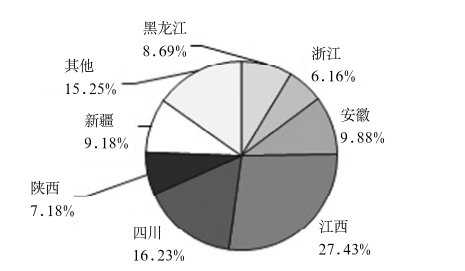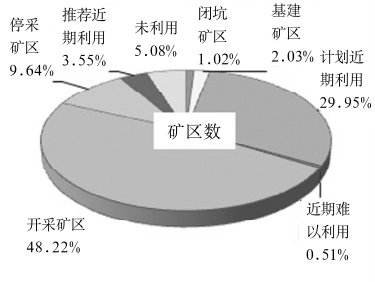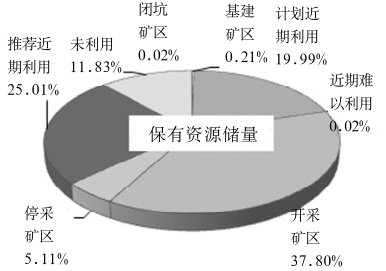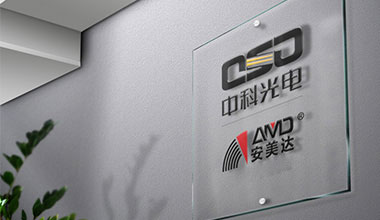Current situation of development and utilization of vein quartz resources and analysis of market demand in China
Vein quartz is not a mineralogical name, but a rock which is formed by hydrothermal or metamorphic process, occurs in vein shape and is almost composed of single quartz mineral. The content of quartz is more than 99%. It often contains a small amount of pyrite, Specularite, hematite, chalcopyrite, galena, feldspar and mica. The rock is white, light gray white, oil luster, non granulated crystalloblastic structure, hard and dense block.
Vein quartz mainly occurs in granite or metamorphic rock area related to migmatization. The ore bodies are vein like and lenticular, with thickness ranging from several meters to tens of meters and length up to hundreds of meters. Most of them are single vein ore or multi vein ore, and the scale is mainly small. As the SiO2 content of natural vein quartz is generally higher than 99%, it is easy to process into high-purity quartz sand with SiO2 content higher than 99.9%.

Geological characteristics of some vein quartz deposits in China (Cui yuezhao, 2008)
As one of the raw materials for processing high purity quartz, vein quartz has unique physical and chemical properties, especially the inherent crystal structure, crystal shape and lattice change rule, which makes it have high temperature resistance, low thermal expansion coefficient, high insulation, corrosion resistance, abrasion resistance, piezoelectric effect, harmonic effect and its unique optical characteristics.
Overview of vein quartz resources in China
The vein quartz resources in China include glass vein quartz, cement vein quartz and metallurgical vein quartz. Jiao Lixiang of Shandong general team of China Building Materials Industry Geological Exploration Center focused on the quartz resources for glass. According to statistics, by the end of 2017, the identified resources of vein quartz for glass were 92.0439 million tons, including 20.3852 million tons of basic reserves and 71.6587 million tons of resources. But the proportion of high-end products that can purify high-purity quartz is very low. Gangue quartz ore for glass in China is mainly distributed in metamorphic rock areas of Jiangxi, Sichuan, Anhui, Xinjiang, Heilongjiang, Shaanxi and Zhejiang.

Distribution of vein quartz resources for glass in China in 2017
Vein quartz for glass is mainly small and medium-sized, including only one large ore, 12 medium-sized ore and 184 small-sized ore. The number of small and medium-sized mining areas accounted for 99.49%, and the retained resource reserves accounted for 84.52%. From 2008 to 2017, the reserves of quartz resources for glass vein showed an overall growth trend. The representative deposits with high vein quartz ore grade in China are: Lingqiu mountain quartz ore in Qichun County, Hubei Province (with SiO2 content of 99.35%), Donghai crystal ore area (quartz vein) in Jiangsu Province (with SiO2 content of 99.19%), and Longchuan vein quartz ore in Banshu Township, Jingde County, Anhui Province (with SiO2 content of 99.01%).
Development and utilization of vein quartz resources in China
According to the statistics of the national mineral resources and Reserves Database (2017), the geological work level of gangue quartz ore for glass in China is average. There are 195 proven reserves, of which 83 (42%) are explored, 30 (15%) are investigated in detail, and 82 (42%) are surveyed. At present, nearly half of the vein quartz ores for glass use in China are very small in scale, and there are very few large-scale ores. In China, there are 19 mineral deposits with quartz vein more than one million tons, of which only one is large.

Development and utilization proportion of vein quartz ore for glass
The degree of development and utilization of quartz ore for glass vein is low. There are 195 mineral areas, and only 95 mining areas, accounting for 48.22% of the total number of mining areas; 66 sites are planned and recommended to be used in the near future, accounting for 33.45% of the total number of mining areas; There are 19 stoping areas, accounting for 9.64% of the total number of mining areas; Closed pit mining area, infrastructure construction area and unused mining area account for 8.13% of the total number of mining areas. The ore reserves of the mining area are 34.344 million tons, accounting for 37.88% of the total reserves; The ore reserve of the stoping mining area is 4.647 million tons, accounting for 5.11% of the total reserve. It is planned to utilize and recommend 40.888 million tons of ore reserves in the near future, accounting for 45.00% of the total reserves (Note: the data is from 2017).

Proportion of development and utilization of retained reserves of quartz vein ore for glass
Brief analysis of vein quartz application market
Vein quartz is mainly used to process high-purity quartz sand in China. High purity quartz sand is the main raw material of quartz glass and quartz crucible. Its downstream application fields are mainly divided into three parts: light source lighting, photovoltaic industry, semiconductor and optical fiber manufacturing. The domestic semiconductor industry started late. According to the statistics of China Semiconductor Association, at present, 90% of the chips in China depend on imports, and the self-sufficiency of semiconductor equipment is less than 5%. The proportion of quartz materials in China is also very low.
According to the prospectus of quartz shares, the domestic quartz glass market in 2012 was 5.316 billion yuan. From the perspective of demand structure, integrated circuits and separation components accounted for 23% (including LED GaAs, front-end devices in photovoltaic field), optical fiber and military industry accounted for 7.5%, silicon single crystal quartz crucible accounted for 35% (mainly photovoltaic), electric light source accounted for 21%, and other products accounted for 14.5%.
On the whole, as the domestic demand structure of quartz products is concentrated in the low-end fields such as electric light source and photovoltaic, there is a huge space for the localization of semiconductor quartz materials. With the rapid development of China's special glass, information technology and other industries, the annual growth rate of demand for high-purity quartz raw materials is about 20%. As an important raw material for high-end quartz products, the demand for vein quartz will increase.
Sources and References:
Reprinted from: China Powder Net
Jiao Lixiang. Current situation of development and utilization of vein quartz resources in China and analysis of supply and demand. China non metallic mineral industry guide, 2019
Tian Qingyue. Crystal chemistry of vein quartz and its relationship with purification effect of high purity quartz. Chengdu University of technology, 2017
Note: the picture is for non-commercial use, there is infringement notice to delete!



 Website Homepage
Website Homepage Product
Product Service
Service News
News About
About Contact
Contact


